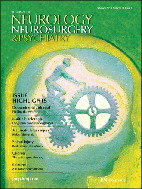 This prospective longitudinal observational study carried out across 17 neuromuscular centres in the UK study aimed to assess the current use of glucocorticoids (GCs) in Duchenne muscular dystrophy (DMD) and compare the benefits and the adverse events of daily versus intermittent prednisolone regimens. Three hundred and sixty boys aged 3-15 years with confirmed DMD were treated with daily or intermittent (10 days on/10 days off) prednisolone for a mean duration of treatment of 4 years. The median loss of ambulation was 12 years in intermittent and 14.5 years in daily treatment; the HR for intermittent treatment was 1.57 (95% CI 0.87 to 2.82). A fitted multilevel model comparing the intermittent and daily regiments for the NorthStar Ambulatory Assessment demonstrated a divergence after 7 years of age, with boys on an intermittent regimen declining faster (p<0.001). Moderate to severe side effects were more commonly reported and observed in the daily regimen, including Cushingoid features, adverse behavioural events and hypertension. Body mass index mean z score was higher in the daily regimen (1.99, 95% CI 1.79 to 2.19) than in the intermittent regimen (1.51, 95% CI 1.27 to 1.75). Height restriction was more severe in the daily regimen (mean z score -1.77, 95% CI -1.79 to -2.19) than in the intermittent regimen (mean z score -0.70, 95% CI -0.90 to -0.49). This study presents a framework for providing information to patients with DMD and their families when introducing GC therapy. The study also highlights the importance of collecting longitudinal natural history data on patients treated according to standardised protocols, and clearly identifies the benefits and the side-effect profile of two treatment regimens, which will help with informed choices and implementation of targeted surveillance.
This prospective longitudinal observational study carried out across 17 neuromuscular centres in the UK study aimed to assess the current use of glucocorticoids (GCs) in Duchenne muscular dystrophy (DMD) and compare the benefits and the adverse events of daily versus intermittent prednisolone regimens. Three hundred and sixty boys aged 3-15 years with confirmed DMD were treated with daily or intermittent (10 days on/10 days off) prednisolone for a mean duration of treatment of 4 years. The median loss of ambulation was 12 years in intermittent and 14.5 years in daily treatment; the HR for intermittent treatment was 1.57 (95% CI 0.87 to 2.82). A fitted multilevel model comparing the intermittent and daily regiments for the NorthStar Ambulatory Assessment demonstrated a divergence after 7 years of age, with boys on an intermittent regimen declining faster (p<0.001). Moderate to severe side effects were more commonly reported and observed in the daily regimen, including Cushingoid features, adverse behavioural events and hypertension. Body mass index mean z score was higher in the daily regimen (1.99, 95% CI 1.79 to 2.19) than in the intermittent regimen (1.51, 95% CI 1.27 to 1.75). Height restriction was more severe in the daily regimen (mean z score -1.77, 95% CI -1.79 to -2.19) than in the intermittent regimen (mean z score -0.70, 95% CI -0.90 to -0.49). This study presents a framework for providing information to patients with DMD and their families when introducing GC therapy. The study also highlights the importance of collecting longitudinal natural history data on patients treated according to standardised protocols, and clearly identifies the benefits and the side-effect profile of two treatment regimens, which will help with informed choices and implementation of targeted surveillance.
